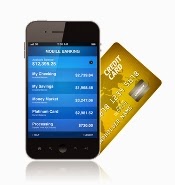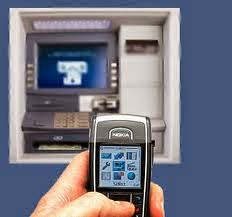Developments in the mobile payments world have really got me worried. I come across an ever increasing account of different banks and technology companies coming to market each with their own variations of what they call “mobile payments”.
To start with the term “mobile payments” is confusing to most, even some seasoned bankers. What the man-in-the street is missing are the fine distinctions in mobile payments such as that between your mobile device as a store of the actual payment or “money” (much like you purse or wallet holds a few banknotes and some small change) and the mobile device as a payment enabler (Apple Pay which actually replaces the many pieces of plastic that once lived in your wallet or PayPal’s mobile app or Pingit in the UK, which accesses and generates a payment from your UK bank account to a beneficiary).
From what I am reading, mobile payments are being embraced by one-and-all and are being used by more and more people to pay for all sorts of goods and services.
However, nice as this all is, there is a problem that threatens the whole concept. There are so many different apps required for you to enjoy the benefits of this new way to pay, that their sheer numbers threaten to smother the whole mobile payments concept before it can take hold. New apps are appearing all the time; either from this or that bank or from individual merchants and stores.
For each additional mobile payments app introduced an additional layer of complexity is added to the payments process, both for the merchant/retailer and for the user. This complexity is further compounded by that fact that many mobile payments apps work in different ways from one another. Often they all have their own unique predefined conventions and rules.
Each of these different method has its own drawbacks too. To illustrate this let’s just consider Apple Pay. Firstly (on the user side), the system works only if you have an iPhone 6. This is a new iPhone model and although it is popular, ownership is still far from being widespread. Secondly (on the merchant/retailer side), the retailer has to purchase terminals that are compatible with Apple’s system. It has been reported that only about 3% of US retailers have the necessary “Near Field Communications” (NFC) compatible terminals to participate in Apple Pay.
Each layer of complexity makes it that much harder for merchants to work within this multiplicity of systems and processes. And complexity has many, many costs attached to it – costs in terms of the multiple systems needed, the specialized hardware, the multiple training needed for staff on each system, differing settlement procedures and the need for separate reconciliations. The more separate processes there are, the greater the propensity for errors to creep in on the human side, of managing the mobile payments receipts for the merchant. In the end many merchants will limit who they will be prepared to work with, in the mobile payments arena, to the few that have the largest user base in their type of business or geography. And we haven’t even looked at the question of international travelers and mobile payments yet.
From the user’s point of view the obstacles are equally severe, from different (and often confusing procedures) to the need for different brands of smartphones. Ideally for the user a single method would be the optimum. Perhaps one payment vehicle (linked to his/her bank account) and one wallet application (stored value on the mobile).
If there are too many payment apps, their use is going to lead to frustration. Frustration will lead to abandonment and abandonment will lead to failure. And that would be a pity.
For some fifty years now the credit card has reigned supreme as a payment mechanism simply because of a standardized numbering convention which has allowed the bulk of cards to be processed via a single merchant/ end user input point. The banks and clearing houses have taken care of all the other financial “plumbing” in the background, far beyond the sight (or the care) of either the retailer or the consumer. To both the credit card has become a seamless payment mechanism. That is what needs to happen to mobile payments.
If mobile payments are to succeed, a single, simple, uniform and universal method (read app) has to be the solution.





